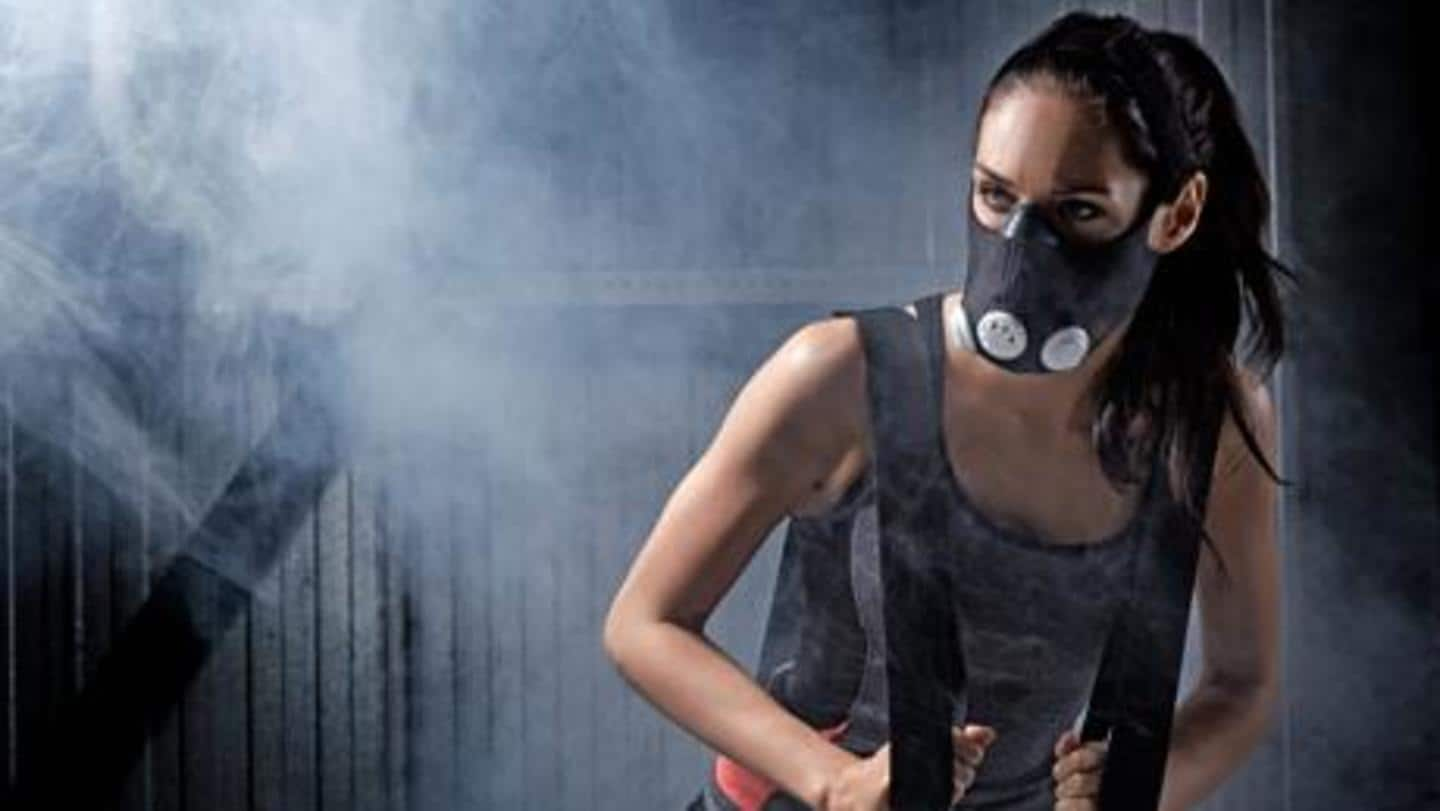
#HealthBytes: Benefits, uses, and side-effects of exercise training masks
What's the story
Exercise training masks, which are also called altitude masks or elevation training masks, are used to add resistance to the workouts by simulating conditions at higher altitudes. Exercise enthusiasts use these masks to limit their oxygen intake and increase their physical performance by achieving many challenging goals. Here are some of the benefits, uses, and possible side-effects of exercise training masks.
Functioning
A training mask makes your heart and lungs work harder
Using a training mask helps recreate a situation similar to high altitudes. Training masks have adjustable valves to restrict the amount of oxygen intake and another valve to release the exhaled air. With a reduced oxygen intake, the heart and lungs work harder. Later, when you remove the mask, your body will be able to use the oxygen more efficiently and perform better.
Benefits
Benefits of using a training mask
A study shows that training masks help increase the VO2 max, which is the maximal oxygen intake of the body during exercises. Another study suggests that training masks train respiratory muscles and help improve lung capacity. However, studies that compare training masks with higher altitude workouts are still in their nascent stage and more uses are yet to be known.
Tips
Here are some tips if you are a beginner
Make sure that the mask fits snugly and is not too tight or loose. Do not head for a ten-mile run at first; instead, wear the mask, get accustomed to it and slowly build up pace. It is also important to pay attention to how you're feeling during the exercises. Remove the mask if you notice any of the following side-effects.
Side-effects
Few side-effects that you may experience
Lightheadedness, dizziness, and anxiety are a few of the common side-effects associated with training masks. It's important to remove the mask if you feel too dizzy and lightheaded. Fatigue and discomfort do not last for many days and maybe the body's way of adapting to a new workout. However, if you feel anxious, it may be a cue not to use a workout mask.